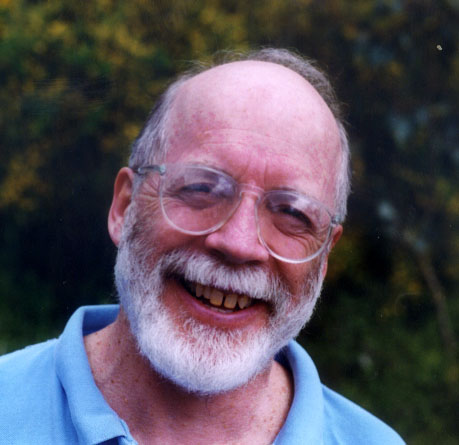 |
 |
 |
|
 Rob Kirby 60 years: 25 February 1998 |
|
In 1963 John Milnor, already emerging as one of the world's most influential topologists, listed seven conjectures that he believed were the "toughest and most important problems in geometric topology". Yet only five years later, a young assistant professor at UCLA found a short but deeply ingenious argument whose elaboration with Larry Siebenmann would, in short order, settle four of these seven conjectures (in dimensions higher than four):
And these were only the first of the consequences of Rob Kirby's now famous "torus trick". Rob Kirby received his Ph.D. from the University of Chicago in 1965 under the direction of the algebraic topologist Eldon Dyer. But, an independent thinker from the start, Rob was not an algebraic topologist -- he was attracted instead to highly geometric problems and to the visual arguments they require. His research spans a broad spectrum of topics, all with this strong visual flavor: topological manifolds of high dimension; the structure of smooth 4-manifolds and their relationship to complex surfaces; and the emerging new invariants for both 3- and 4-dimensional manifolds. In both dimensions three and four, the "Kirby Calculus" has become a standard analytical tool. He has helped to organize and to develop problem lists which have become standard reference points for progress in geometric topology. The importance of his work has been recognized in many ways. Among the highlights: In 1971 the American Mathematical Society awarded him the Veblen Prize in Geometry. In 1974 the Guggenheim Foundation offered him a Guggenheim Fellowship. He has served as Deputy Director of Berkeley's famed Mathematical Sciences Research Institute. In 1995 the National Academy of Sciences, recognizing the role that the Kirby problem lists have played in the development of geometric topology, presented to him the Award for Scientific Reviewing. The award had never previously gone to a mathematician. An outstanding feature of Rob's mathematical contribution has been his work with graduate students. He has been the official advisor of at least 36 successful Ph.D. students, and served as an unofficial mentor to many more. Many of his students have had Ph.D. students of their own. At last count, he has 94 mathematical descendants, including three great-grandchildren (all via granddaughters!); any Kirby genealogy is rapidly out of date. What accounts for this impressive record? Those who know Rob can easily speculate: Surely his easy-going and friendly manner play a role, especially when coupled with his intense interest in what students have been learning. He encourages students to think independently and is willing to talk to students about a wide range of subjects. He draws beautiful pictures on the board at tea-time; this always attracts a crowd. It is no surprise, then, that the Kirbyfest, held at the Mathematical Sciences Research Institute on June 22-26 1998, attracted over 100 mathematicians from around the globe. Many of the participants were collaborators, or former students; others were just fans of Kirby and his work. There were 27 plenary talks, covering a wide variety of topologically related subjects, including several historical surveys. Fields Medalists gave five of the talks. Seven presentations were specifically organized to be easily accessible to graduate students. We hope these proceedings convey some of the mathematical excitement of the Kirbyfest week, and we are honored to dedicate it to Rob. Joel Hass and Martin Scharlemann |
| Contents |
 |
